
The Constellation Scorpius


|
The Constellation Scorpius |

|

Remember the red star Antares which is the heart of the Scorpion - Antares is a red super-giant and it is a first magnitude star. There is only one other red super-giant that is this bright and it's on the opposite side of the sky, in the constellation that dominates the winter sky -- the star Betelgeuse in the constellation Orion. Both stars are about 500 ly away in opposite directions so we lie just about halfway between the two. Such stars are rare -- there are only 200 known red super-giants and all are much dimmer, most are much farther away than these two stars.
Even though it is a red super-giant near the end of it's life, Antares is actually a very young star, at least compared to the sun. Antares was born only about 20 million years ago, long after the Dinosaurs died out, and is nearly at the end of its life already. This is because Antares is so much more massive than the sun. The greater mass causes greater pressure and forces the star to burn hotter (bluer) and faster. So Antares was once a blue supergiant with 12 times the mass of the sun, burning 6,000 times as fast as the sun. Its life as a star will only be about 2 thousandths as long the sun will live. With stars, the bigger they are, the harder they fall.
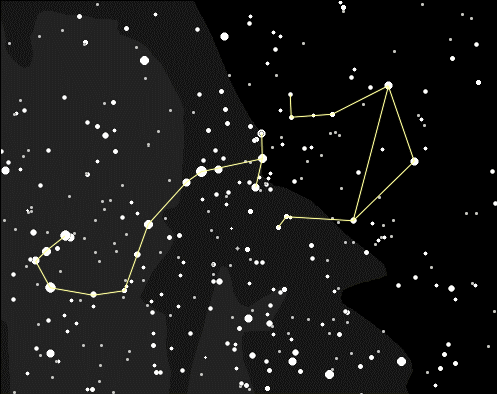
If you look at the Southern Claw in the binoculars you will discover it is actually a double star -- a true double star -- they are the same distance of 75 light years away and moving together. If you have good eyes you may be able to see both stars without the binoculars. Meanwhile if you look at the Northern Claw in the binoculars you see what many people call the only green star visible to the naked eye. What do you think? Is this star really green?
m (Mu) Scorpii is a double blue star, a true pair almost a light-year apart. South of m is z (Zeta) Scorpii, a visual double, not a true double (very close to the horizon, difficult to see even with binoculars). The eastern, brighter star is an orange giant about 150 light years away. The western star is a blue super-giant estimated to be 5700 light-years away, one million times as bright as the sun - a candidate as possibly the most massive super-giant known. Just above z Scorpii is a beautiful open cluster, NGC6231. The bright star at the tip of the scorpion's tail is Shaula, a brilliant blue star about 310 light years away.
| NGC6231 is called the "Northern Jewel Box". |
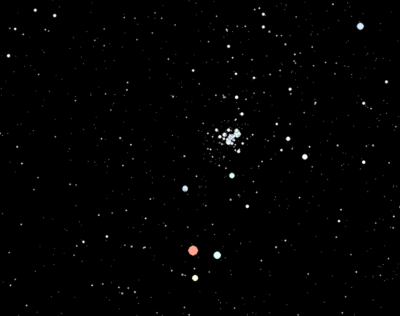 |
These two clusters are good examples, most of the brightest stars are blue ones. Groups like this eventually break up, mostly by random events, (our sun has left it's original cluster) so when they are still together like this it's another sign that the cluster is young.
M6 is sometimes called the "Butterfly Cluster" because it looks like a butterfly with its wings open (flying toward the Northwest). Can you see it in the telescope? You may even be able to spot the butterfly's antennae. Can you spot the orange giant among the hot blue stars? M7 is more spread out (it's closer) - it can be seen perfectly well with binoculars and can even be spotted with the unaided (sharp) eye.
| M6 Butterfly Cluster | M7 |
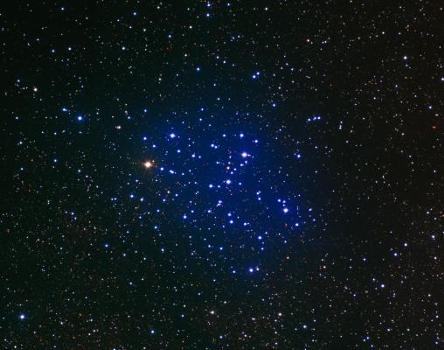 |
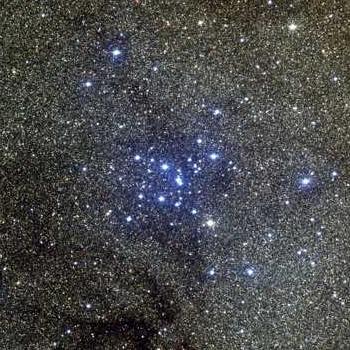 |
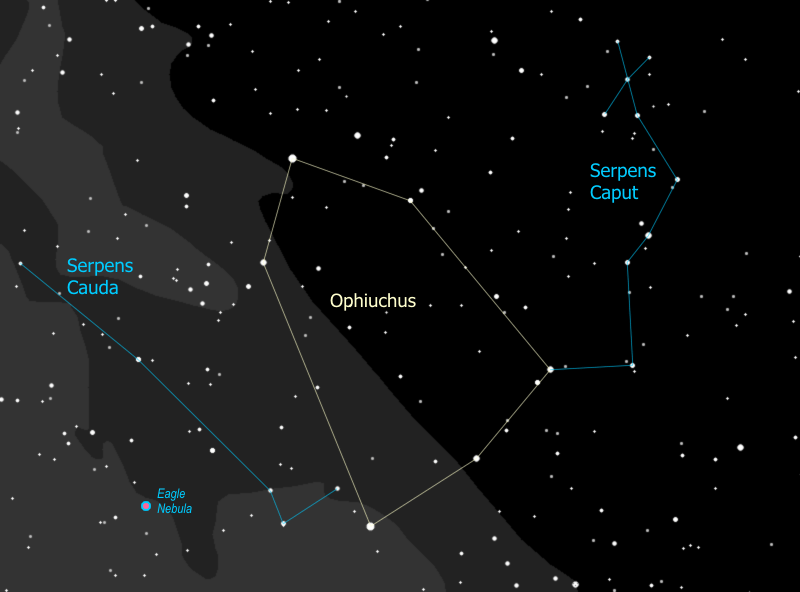
 Back to Sagittarius
Back to Sagittarius
|
 Go to Summer Index
Go to Summer Index
|
 On to the Milky Way
On to the Milky Way
|
Your questions and comments regarding this page are welcome.
You can e-mail Randy Culp for inquiries,
suggestions, new ideas or just to chat.
Updated 17 August 2017